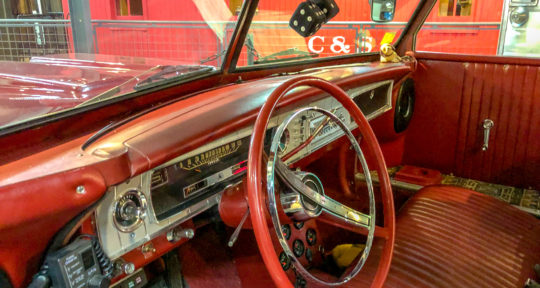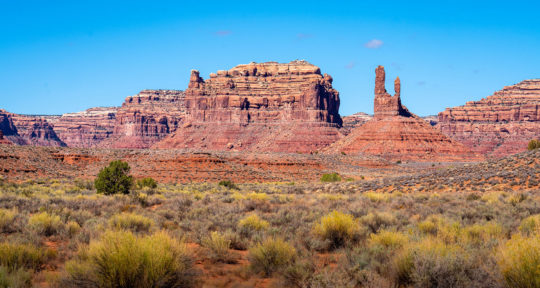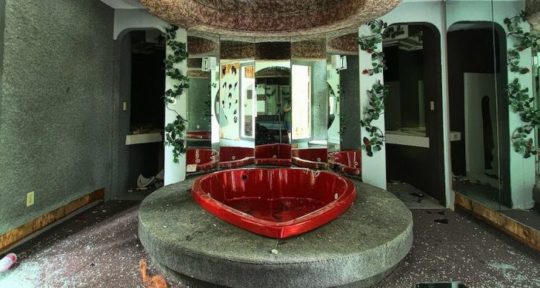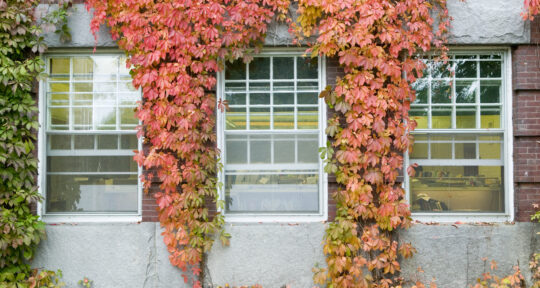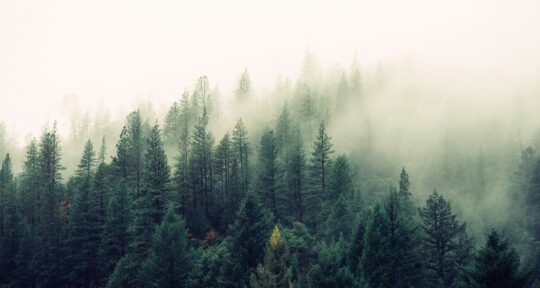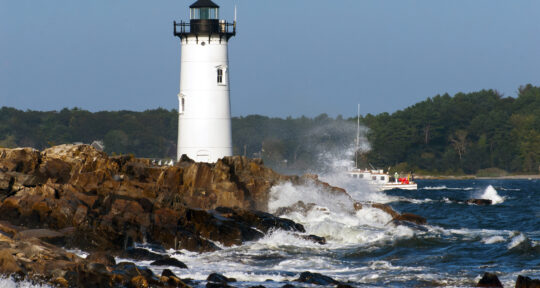If you’re scrolling through Instagram and happen to come across a bright orange square, don’t worry—it’s not the Fyre Festival coming back to haunt you. This eye-popping object is “Specter,” a geometric sculpture created by Los Angeles-based artist Sterling Ruby and placed in the California desert.
Where it sits, in the center of a vast, empty lot surrounded by mountains, it sticks out like a sore thumb. But unless you’re looking for it, you could just as easily drive right past it. And this is the point, sort of, of Desert X.
Now in its second iteration, the interactive, mostly-outdoors art exhibit has taken over the Coachella Valley in the southeastern corner of California. Stretching from Palm Springs in the west to the Salton Sea in the east, it showcases 19 site-specific installations on display between February 9 and April 21, 2019. Some are in remote areas that have been opened to the public specifically for this event; others are in public places such as downtown bus stops.
“What’s great about Desert X is that it takes you to places you’d never normally go,” says Neville Wakefield, the exhibit’s artistic director. And experiencing all of Desert X means going on a wild ride through some of California’s most rugged—and glamorous—landscapes.
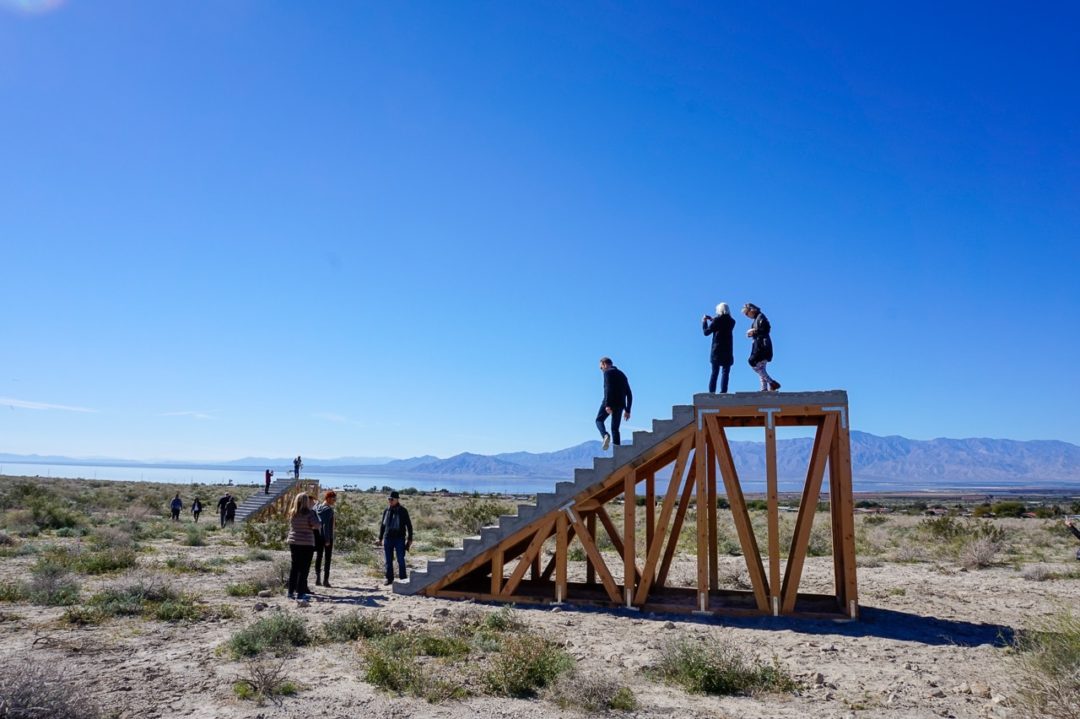
The Coachella Valley is many different things
The Coachella Valley is a difficult place to define or explain. It’s not one thing, but rather a vivid, diverse patchwork of desert cities, all with their own distinct identities.
At the valley’s westernmost edge sits Palm Springs, a mid-century modern vacation paradise welcoming millions of visitors annually—many heading east from Los Angeles for a weekend escape from the city. To the east lies the surreal and mostly abandoned wasteland that is the Salton Sea, offering few signs of its heyday as a thriving resort area in the 1960s.
Throughout the valley, there’s the omnipresent Cahuilla nation, whose various tribes are major landowners in the area, operating casinos and other businesses on reservation land. Many of the artists in this year’s exhibit are paying homage to this ancestral land and its complicated, often painful, history.
One of the most dramatic pieces is named “Jackrabbit, Cottontail & Spirits of the Desert.” In it, California-based Cara Romero—who herself is a Chemehuevi tribal citizen—examines indigenous life and tradition through five photographs displayed on massive billboards along Gene Autry Trail, a major Palm Springs thoroughfare.
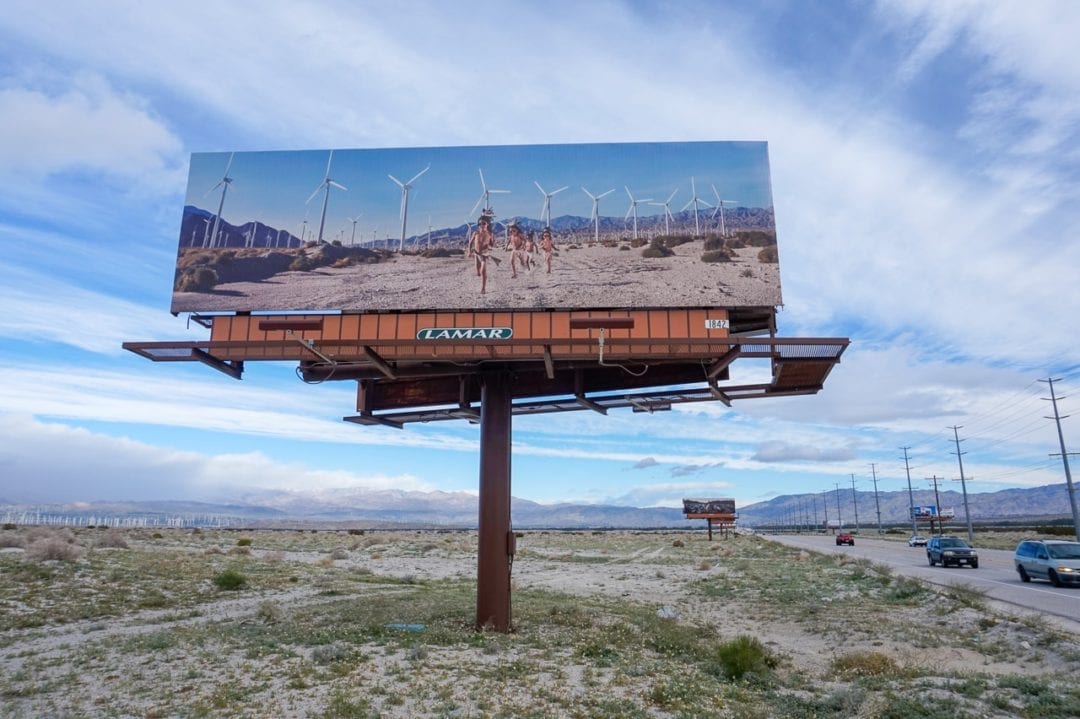
“You’ll see a progression of images with four young boys who you can think of as time travelers, but what they do is bring visibility and acknowledgement to the people who have occupied this land historically,” Desert X co-curator Amanda Hunt explains.
At its southernmost installation, Desert X is less than 100 miles from the Mexican border, and the exhibit acknowledges this connection in several pieces. Pia Camil’s “Lover’s Rainbow” is perhaps the most obvious example. The Mexico City-based artist has created two identical rainbows made of rebar. One sits in the Coachella Valley and the other a few hundred miles south, in Ensenada, Mexico.
“It’s about building hope and prosperity, and reaching across borders,” says Neville Wakefield, although the symbolism is arguably hard to miss.
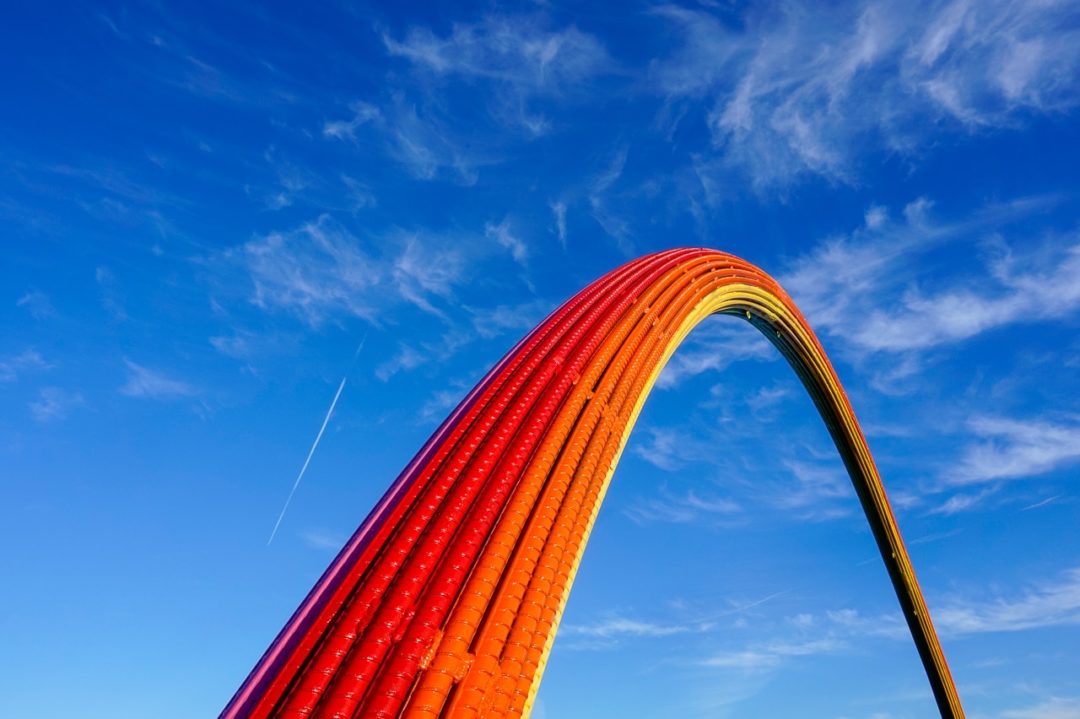
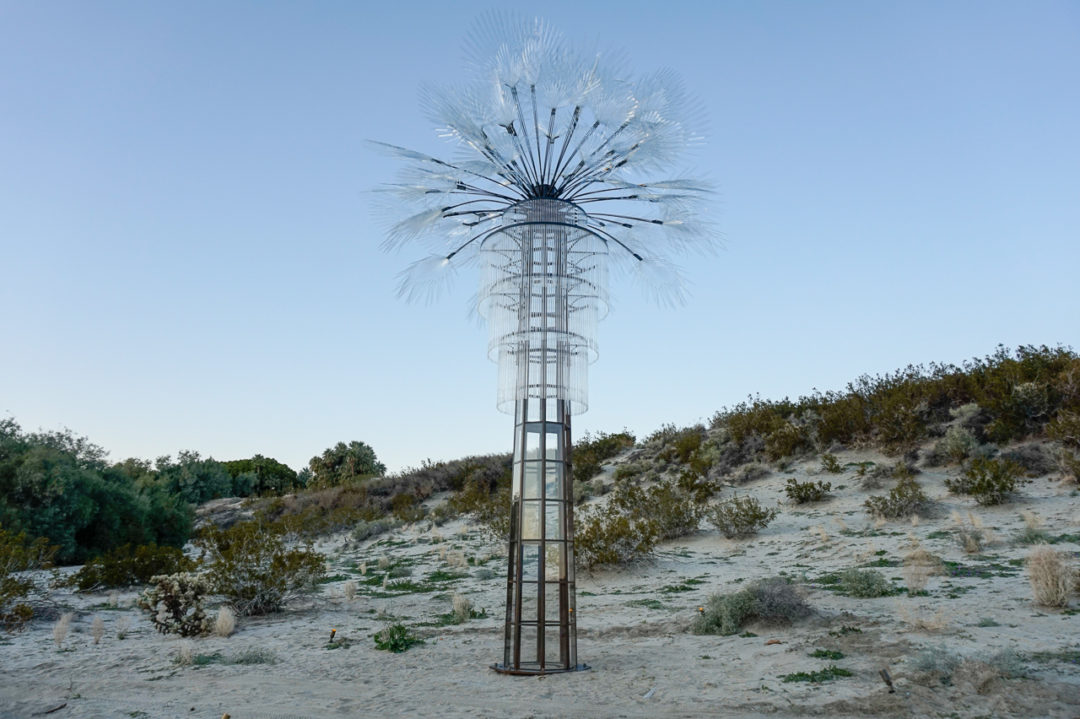
Going viral
Desert X launched in 2017 as a way to highlight and discover the Coachella Valley—and its history and unique challenges—through art.
“I was interested in coming up with a way that contemporary artists could come out here, to the beautiful Coachella Valley, and be inspired by its beauty, its environment, its history,” says Desert X founder Susan Davis.
It’s a mission that apparently resonated with a lot of people. In 2017, roughly 200,000 visitors from all over the world came to view Desert X. Several pieces also went viral on social media—like Doug Aitken’s mirror house.
This year’s artists hail from all across the globe: Colombia, Germany, Argentina, Mexico, Ireland, Egypt, Brazil, Denmark, and Sweden are all represented, along with several U.S.-based artists. They have all created something that interprets, criticizes, illuminates, or embraces the Coachella Valley.
And there’s still that viral, Instagram-friendly vibe that lends itself especially well to the desert. Expect to navigate around crowds of influencers at Kathleen Ryan’s “Ghost Palm,” a 20-foot chandelier palm tree. At dusk, the sky reflected against the piece’s various window panes creates a stunning effect—and a can’t-miss photo op.
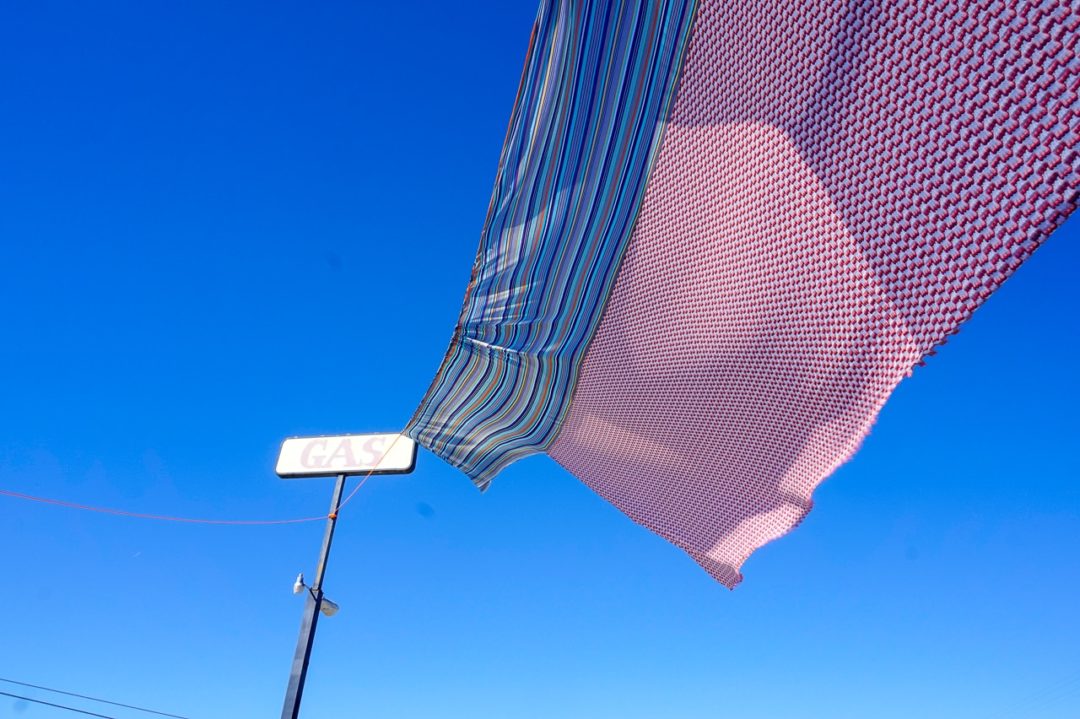
For lovers of high-end Italian fashion and abandoned buildings (we know you’re out there), Eric Mack’s piece “Halter” combines the elegant with the rugged. An iconic, defunct gas station next to the Salton Sea has been completely draped in Missoni fabrics. And then there’s “Dive-in,” a massive, coral-like structure by Danish collective Superflex. The bright pink—and highly photogenic—installation serves as an architectural reminder that what is now desert was once underwater.
An art exhibit for roadtrippers
It would be difficult, perhaps even impossible, to view all of Desert X in one day. The exhibit covers a roughly 55-mile-wide area across seven cities, with locations ranging from busy city streets to public parks to compost facilities to private homes.
Some pieces—like Nancy Baker Cahill’s “Revolutions” and “Margins of Error”—require a specific smartphone app to be viewed. Others might not be visible at all. Steve Badgett and Chris Taylor’s “Terminal Lake Exploration Platform,” for example, is a solar-powered raft exploring the Salton Sea and collecting data across the lake. Depending on its location, it may not be detectable from the shore (but results from the project will still be displayed inside the Salton Sea Visitor Center).
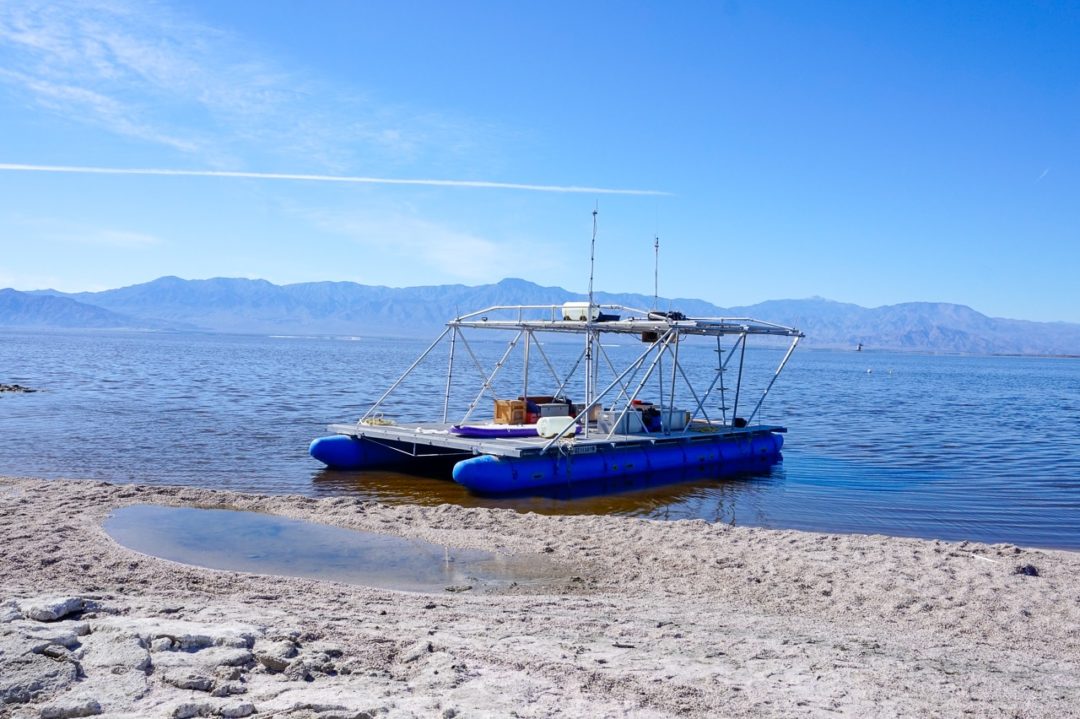
There’s also ShyBot, a six-wheeled robot programmed to roam the desert while avoiding contact with humans. It was originally released during Desert X in 2017, but was lost when its tracking capabilities went out. Now restored and re-released, ShyBot’s location is “everywhere and nowhere,” according to the exhibit program.
“The whole point of Desert X is to get people out of their homes, into the landscape, and out of their cars to experience places that they might not normally pursue,” says Desert X board member Steven Biller.
You might call it an art exhibit for roadtrippers, or a road trip for art aficionados. Either way, Desert X feels is a heartfelt celebration of the Coachella Valley.
Desert X runs February 9 through April 21, 2019 in the Coachella Valley, California. Check out the website for locations and more details.

